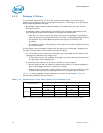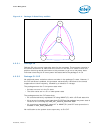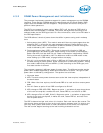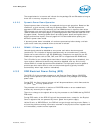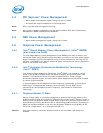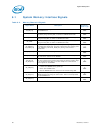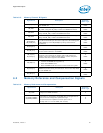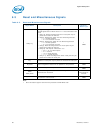
Datasheet, Volume 1 61
Power Management
4.6.4 Intel
®
Smart 2D Display Technology (Intel
®
S2DDT)
Intel S2DDT reduces display refresh memory traffic by reducing memory reads
required for display refresh. Power consumption is reduced by less accesses to the IMC.
S2DDT is only enabled in single pipe mode.
Intel S2DDT is most effective with:
• Display images well suited to compression, such as text windows, slide shows, and
so on. Poor examples are 3D games.
• Static screens such as screens with significant portions of the background showing
2D applications, processor benchmarks, and so on, or conditions when the
processor is idle. Poor examples are full-screen 3D games and benchmarks that flip
the display image at or near display refresh rates.
4.6.5 Intel
®
Graphics Dynamic Frequency
Intel Graphics Dynamic Frequency Technology is the ability of the processor and
graphics cores to opportunistically increase frequency and/or voltage above the
ensured processor and graphics frequency for the given part. Intel Graphics Dynamic
Frequency Technology is a performance feature that makes use of unused package
power and thermals to increase application performance. The increase in frequency is
determined by how much power and thermal budget is available in the package, and
the application demand for additional processor or graphics performance. The
processor core control is maintained by an embedded controller. The graphics driver
dynamically adjusts between P-States to maintain optimal performance, power, and
thermals.
4.7 Graphics Thermal Power Management
See Section 4.6 for all graphics thermal power management-related features.
§ §




